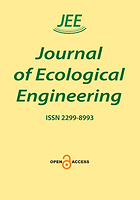
New model for simulating autumn phenology of herbaceous plants in the Inner Mongolian Grassland
Sign Up to like & getrecommendations! Published in 2019 at "Agricultural and Forest Meteorology"
DOI: 10.1016/j.agrformet.2019.05.011
Abstract: Abstract Autumn phenology is important in determining the growing season length and controlling carbon and energy exchanges in terrestrial ecosystems. However, our knowledge on the interaction processes of vegetation autumn phenology and climate changes remains… read more here.
Keywords: autumn phenology; brown date; model; herbaceous plants ... See more keywords

Herbaceous plants in the understory of a pitch canker-affected Pinus radiata plantation are endophytically infected with Fusarium circinatum
Sign Up to like & getrecommendations! Published in 2018 at "Fungal Ecology"
DOI: 10.1016/j.funeco.2017.12.001
Abstract: Abstract Fusarium circinatum was recently detected as an endophyte in grasses causing no apparent damage. Our goal was to describe the endophytic colonization of herbaceous host plants growing in a plantation of Pinus radiata with… read more here.
Keywords: fusarium circinatum; herbaceous plants; non symptomatic; pitch canker ... See more keywords

Allometric scaling of biomass with nitrogen and phosphorus above- and below-ground in herbaceous plants varies along water-salinity gradients
Sign Up to like & getrecommendations! Published in 2021 at "AoB Plants"
DOI: 10.1093/aobpla/plab030
Abstract: Abstract Biomass allocation affects the ability of plants to acquire resources and nutrients; a limited allocation of nutrients, such as nitrogen and phosphorus, affects ecological processes. However, little research has been conducted on how plant… read more here.
Keywords: ground; allocation; biomass; herbaceous plants ... See more keywords

Investigation of asymptomatic infection of Phellinus noxius in herbaceous plants.
Sign Up to like & getrecommendations! Published in 2022 at "Phytopathology"
DOI: 10.1094/phyto-08-22-0281-r
Abstract: The white-rot fungus Phellinus noxius is known to cause brown root rot disease (BRRD) in woody trees and shrubs. To understand the pathogenicity of P. noxius in herbaceous plants, we investigated 23 herbaceous weed and… read more here.
Keywords: noxius herbaceous; asymptomatic infection; investigation asymptomatic; phellinus noxius ... See more keywords

Aggregated Distribution of Herbaceous Plants in Restored Vegetation Community in a Semi-arid Area: Evidence from the Loess Plateau of China
Sign Up to like & getrecommendations! Published in 2020 at "Russian Journal of Ecology"
DOI: 10.1134/s1067413620020058
Abstract: Abstract The spatial pattern of herbaceous plants is closely associated with the reestablishment of species diversity as well as other ecological benefits in restored vegetation communities. However, it is still not clear how the distribution… read more here.
Keywords: number; spatial heterogeneity; herbaceous plants; vegetation ... See more keywords

Growth Parameters of Herbaceous Plants on Phosphogypsum Dumps with Using Soil Coverings Based on Sewage Sludge
Sign Up to like & getrecommendations! Published in 2021 at "Journal of Ecological Engineering"
DOI: 10.12911/22998993/134247
Abstract: The phosphogypsum dumps are one of the most toxic solid wastes of phosphoric acid, phosphate and phosphorus fertilizers manufacturing enterprises. In the article the possibility of remodeling of phosphogypsum dumps with using the Poaceae family… read more here.
Keywords: herbaceous plants; parameters herbaceous; growth parameters; phosphogypsum dumps ... See more keywords

The Role of Spontaneous Flora in the Mitigation of Particulate Matter from Traffic Roads in an Urbanised Area
Sign Up to like & getrecommendations! Published in 2023 at "Sustainability"
DOI: 10.3390/su15097568
Abstract: Particulate matter (PM) is a serious air pollutant that poses significant health risks. One solution to reduce PM concentrations in these areas is through phytoremediation, a process that involves using plants to remove contaminants from… read more here.
Keywords: spontaneous flora; role; particulate matter; accumulation ... See more keywords